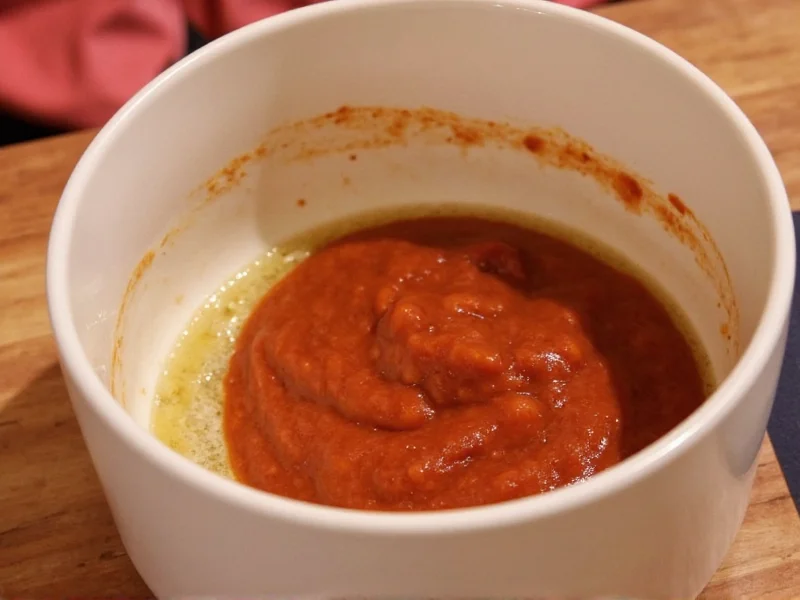When you ask what is a mojo sauce, you're exploring one of Spain's most vibrant culinary traditions. This versatile sauce traces its roots to the Canary Islands, where indigenous Guanche people first created early versions using local ingredients. Spanish settlers later incorporated garlic, vinegar, and olive oil after colonization, establishing the foundation for modern mojo sauce recipes.
Historical Origins of Mojo Sauce
The term "mojo" likely derives from the Portuguese word "molho," meaning sauce, reflecting the cultural exchange between Portugal and the Canary Islands during the Age of Exploration. Originally, Canarian cooks used mojo as a preservation method for fish and meats. The sauce's acidic components helped extend food's shelf life in the islands' warm climate before refrigeration existed.
Mojo Rojo vs Mojo Verde: Understanding the Differences
While both varieties share core ingredients, their distinctive characteristics serve different culinary purposes:
| Characteristic | Mojo Rojo (Red Mojo) | Mojo Verde (Green Mojo) |
|---|---|---|
| Primary Color Source | Smoked paprika (pimentón) | Fresh cilantro or parsley |
| Flavor Profile | Earthy, smoky, slightly sweet | Herbaceous, bright, citrus notes |
| Traditional Pairings | Papas arrugadas (wrinkled potatoes), grilled meats | Fish, vegetables, bread |
| Regional Popularity | Eastern Canary Islands (Lanzarote, Fuerteventura) | Western Canary Islands (Tenerife, La Gomera) |
Essential Ingredients in Authentic Mojo Sauce
Creating genuine mojo sauce from Canary Islands requires specific components that work in harmony:
- Garlic - The foundation, typically used raw for maximum pungency
- Olive oil - High-quality extra virgin provides the emulsion base
- Vinegar - Usually wine vinegar, though some traditional recipes use local palm vinegar
- Ground cumin - Adds earthy warmth distinctive to Canarian mojo
- Red pepper flakes or paprika - For mojo rojo's characteristic color and heat
- Fresh herbs - Cilantro or parsley for mojo verde's vibrant green hue
- Optional additions - Saffron, roasted peppers, or local mojo picón for extra complexity
Traditional Preparation Methods
The authentic how to make mojo sauce process involves specific techniques passed down through generations. Unlike modern blender methods, traditional preparation uses a mortar and pestle (pilón) to gradually incorporate ingredients. This manual method creates a more stable emulsion and releases essential oils from garlic and herbs more effectively than mechanical blending.
Chefs begin by crushing garlic with salt to form a paste, then slowly drizzle in olive oil while continuously grinding. Vinegar and spices are added incrementally until the sauce reaches its characteristic pourable but cohesive consistency. The gradual incorporation prevents separation and creates a silkier texture than quick-blended versions.
Culinary Applications Beyond Potatoes
While most associate mojo sauce for papas arrugadas (Canarian wrinkled potatoes), its versatility extends across multiple dishes:
- Marinades - The acidic components tenderize meats while infusing flavor
- Dipping sauce - Served with bread, vegetables, or fried foods
- Sandwich spread - Adds moisture and complexity to sandwiches
- Salad dressing base - Thinned with additional vinegar for greens
- Seafood accompaniment - Complements grilled fish and shellfish
Chefs in the Canary Islands often layer multiple mojo varieties in a single dish, creating complex flavor profiles. A traditional Canarian meal might feature both red and green mojo served alongside different components of the plate.
Storage and Shelf Life Considerations
Understanding how long does mojo sauce last is crucial for maintaining quality. Freshly made mojo keeps for 3-4 days in a sealed container in the refrigerator. The garlic's potency intensifies over time, while the emulsion may separate. Gently shaking or stirring before use restores consistency. For extended storage, freeze portions in ice cube trays, then transfer to freezer bags for up to 3 months.
Traditional Canarian cooks note that mojo's flavor improves after 24 hours as the ingredients meld. However, the raw garlic component means the sauce won't maintain peak quality beyond a week, even refrigerated. Always store in glass containers rather than metal, which can react with the vinegar.
Regional Variations Across Spain and Latin America
As Canary Island residents migrated, they carried mojo sauce traditional recipe techniques to other regions, creating fascinating adaptations:
- Cuba - Mojo includes sour orange juice and oregano, essential for Cuban mojo-marinated pork
- Puerto Rico - Adds culantro and uses more vinegar for a brighter profile
- Dominican Republic - Incorporates tomato and bell peppers for a salsa-like consistency
- Venezuela - Features more garlic and less oil, often served with arepas
- Mainland Spain - Some regions add almonds for a thicker, romesco-like texture
Despite these variations, the core elements of garlic, oil, and acid remain consistent across all authentic mojo preparations. The Canary Islands version remains the gold standard for culinary purists seeking the original what is mojo sauce experience.











 浙公网安备
33010002000092号
浙公网安备
33010002000092号 浙B2-20120091-4
浙B2-20120091-4